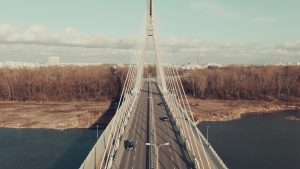
Recently, the Francis Scott Key Bridge in Maryland was struck by a container ship. The destruction of this bridge is devastating but it wasn’t the first. Between 1960 and 2015, there were 35 major bridge collapses worldwide due to ship and barge collisions. Many of these collapses are a result of the practices at the time. However, many advancements in bridge construction are working to prevent these types of accidents. Steel bridges are being built differently, especially with custom fabrications.
The earliest surviving bridge in the United States is located in Philadelphia. Frankford Avenue Bridge was the beginning of the stone era for bridges that would continue until 1915. Over the years, the architecture of bridges evolved. Some different types of bridges that came in and out of fashion include:
In addition to design changes, bridges started to use metal supporting rods in concrete for reinforcement. Steel became a prominent component in bridge construction, including all-steel railroad bridges like the Glasgow Railroad Bridge. Many bridges have been standing strong for decades. However, it was not until the 1980 Sunshine Skyway Bridge collision in Florida that bridges had to be made to resist collisions.
With the new standards, truss bridges have started to fall out of favor because they cannot withstand the impact of a ship or barge. As a result, cable-stay bridges are becoming common practice. The new Gordie Howe International Bridge (connecting Detroit with Windsor) is a cable-stayed design, with its major supports being on land. Steel fabrications are become integral for new construction. In suspension and cable-stayed bridges, steel cables are used to support the bridge deck. These cables are often made from high-strength steel and are anchored to massive concrete or steel structures at either end of the bridge. Building these new bridges involves a lot of components built by many companies with steel and fabrication expertise.